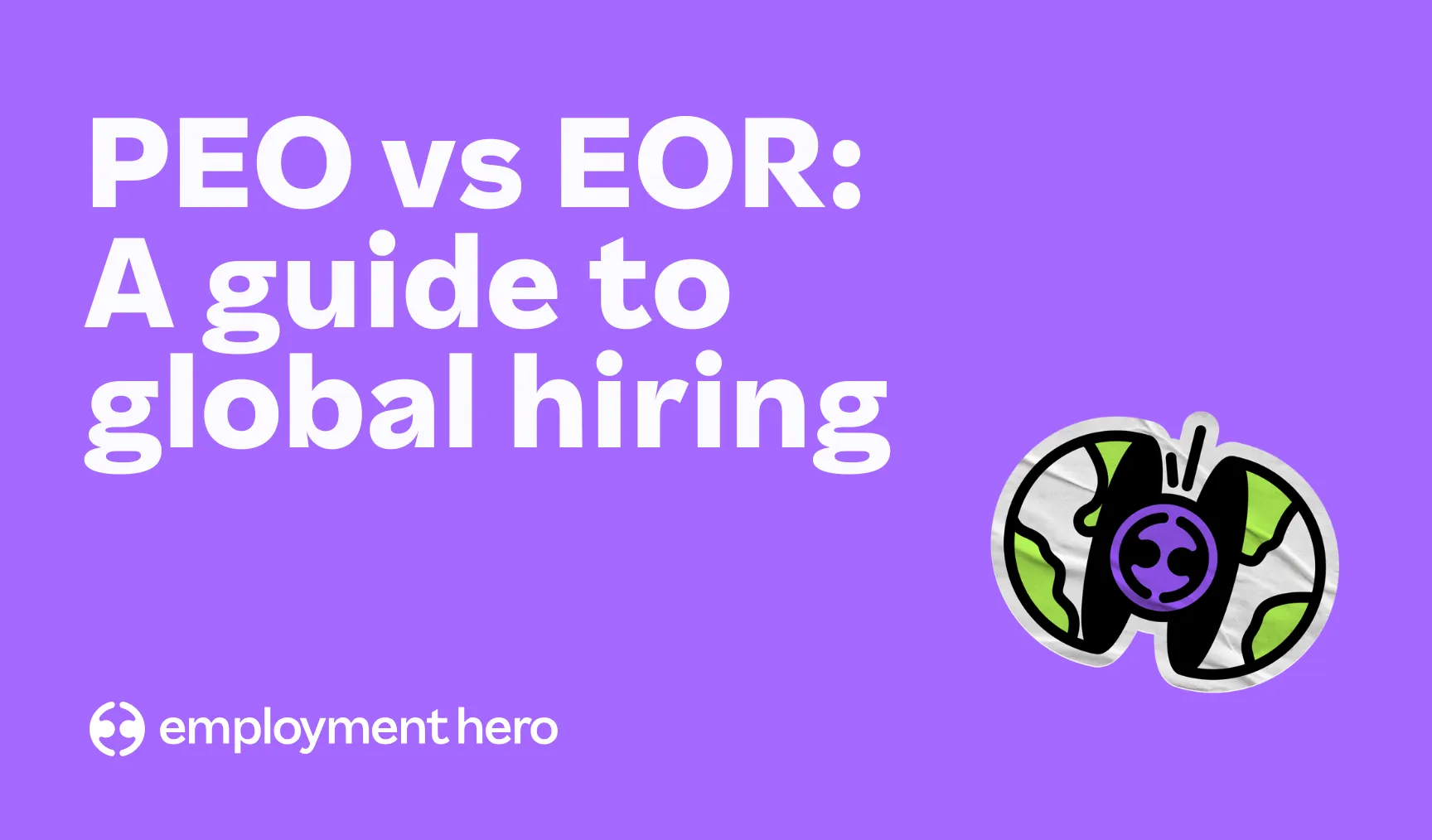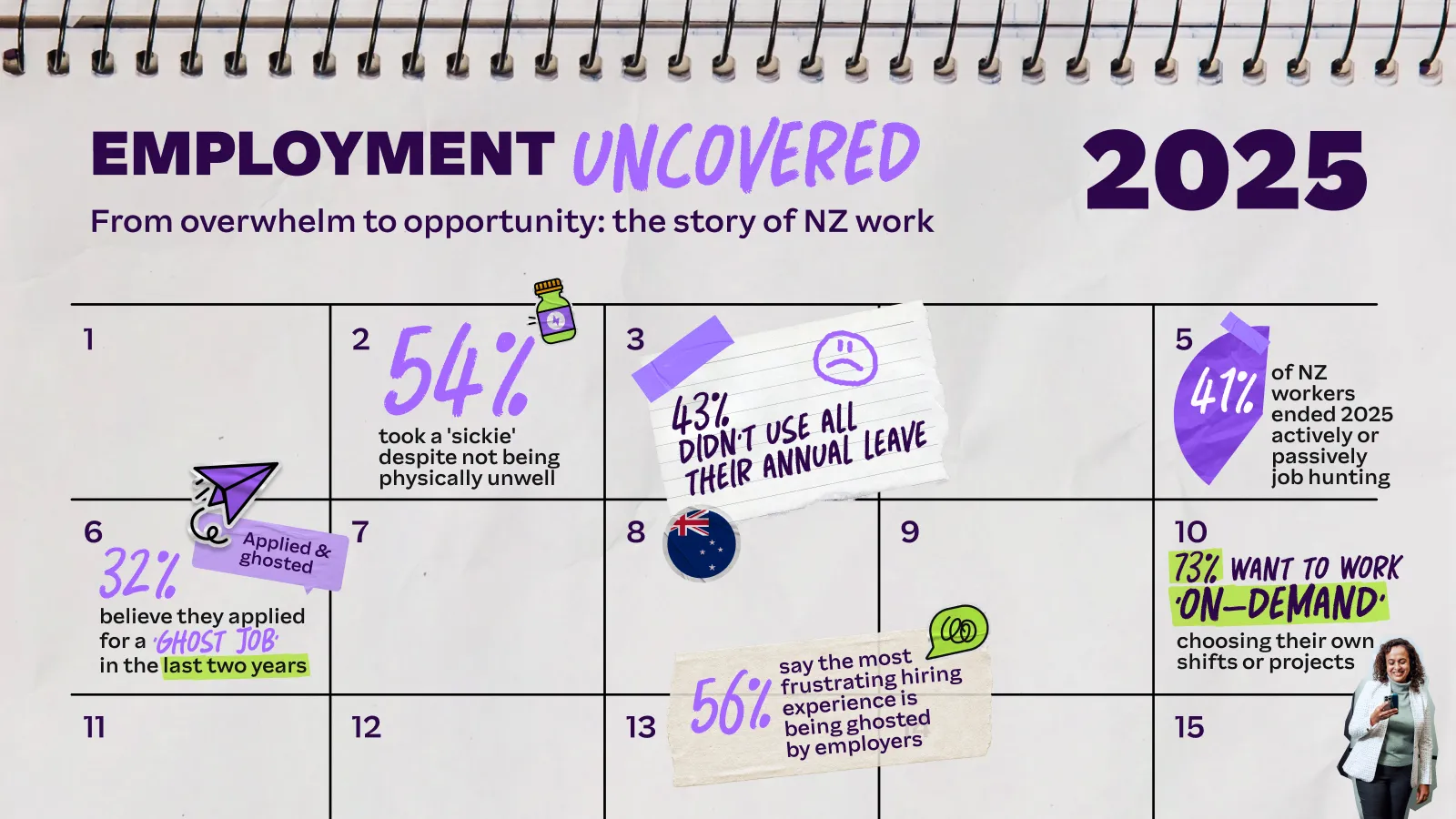Managing public holidays and annual closedowns
Between managing staff and running the day-to-day, employers are well and truly ready for a break. But before you run off to the beach, there’s a few things you should know about the upcoming public holidays.

Contents
It’s almost that time of year again: a bunch of public holidays are coming up quickly, and many Kiwis are looking forward to winding down for the year. But for employers – particularly those in hospitality, retail and tourism – things may just be starting to pick up. With more customers, managing staff rosters, and everything else, it can feel like a mad rush to the finish line. In all the chaos, it’s easy to forget key details, such as the requirement to notify employees 14 days in advance of any closure. We’ve wrapped up some top tips for making sure you’re ahead of the game this summer, so you can make the most of the busy holiday season.
Four public holidays just around the corner
With four public holidays coming up soon, now is a great time to get prepared so you can maximise productivity over this period. Christmas Day (25 December) Christmas day is both a public holiday and a ‘restricted trading day’ – meaning most people aren’t working, and many businesses will close, with exceptions including places like petrol stations and pharmacies.Boxing Day (26 December) Boxing day is also a public holiday, although it isn’t a restricted trading day – businesses are free to operate as per usual, and many Kiwis will be out shopping for Boxing Day deals. In fact, you may want to check you have rostered enough staff for Boxing Day if you expect lots of foot traffic. New Year’s Day (1 January) and Day after New Year’s Day (2 January) New Year’s Day and the Day after New Year’s Day are both public holidays, but trade is not restricted during either. Any business can open on these holidays.
Other public holidays
Kiwis get a total of 12 public holidays per year, including the four mentioned above. The other public holidays after the Christmas period include:
- Regional Anniversary Day (date decided locally)
- Waitangi Day (6 February)
- Good Friday (dates vary)
- Easter Monday (dates vary)
- ANZAC Day (25 April)
- King’s Birthday (first Monday in June)
- Matariki (dates vary)
- Labour Day (fourth Monday in October)
A heads up about ‘Mondayisation’
One important rule is Mondayisation: if a public holiday falls on a Saturday or Sunday, and it’s not a working day, it’s moved to the next Monday. If the employee would be working on that original Saturday or Sunday date however, the public holiday remains on that day and they’re entitled to a paid day off. It can get a little complicated: if you’re unsure, you’ll find a helpful questionnaire on the Employment New Zealand website. You can trade on public holidays within these rules, but there are other important requirements for staffing, wages, and more. Staying informed about these requirements can help boost your compliance confidence, and give your business the best chance of success over the holidays.
The two must-haves for staffing on public holidays
Depending on the employment type, a public holiday may entitle an employee to a paid day off work. However it’s important to be aware that there are clear rules around when you can ask someone to get back on the tools. If you intend to ask your staff to work on any of the upcoming public holidays, make sure you can answer ‘yes’ to the following.
Does the public holiday fall on an ‘otherwise working day’?
An ‘otherwise working day’ is one that an employee would have been working, had there not been a public holiday or any leave taken. This can be fairly easy to define in the case of set working hours or consistent rosters. However, it’s less clear when an employee works varying shifts or is on-call. In that instance, it’s up to you and the employee to come to a fair and reasonable agreement. During these conversations, consider the following:
- What is defined in the employment agreement;
- The employee’s usual work patterns;
- If the employee works only when work is available.
Agreeing on these definitions is why writing a clear and comprehensive employment agreement for new employees can really help further down the line.
Is the requirement to work public holidays outlined in their employment agreement?
You can only compel an employee to work on a designated public holiday, if it’s clearly stated in their signed employment agreement. To avoid any confusion, check that you’re covered in this area before asking your team to work. Hero tip: Not sure about the rules around employment agreements? You’ll find everything you need to know in our Employment Agreement NZ Factsheet.
What to pay employees on public holidays
By law, you may be required to pay increased wages to those working public holidays. Typically, this is at least their daily pay, multiplied by 1.5 (time-and-a-half). Understanding these requirements and preparing for them early will help you manage your budget and payroll so you can focus on business growth.
How does time-in-lieu work?
Employees working on public holidays are also entitled to an alternative paid leave day, called ‘time in lieu’. As an employer, you should work with your employee to agree on a date that they can take this leave. However, if you can’t reach an agreement, the final date is ultimately at your discretion – so long as you can provide a ‘reasonable basis’ and at least 14 days of notice. Managing steeper wage expenses can be difficult for small-to medium-sized businesses. Thankfully, you don’t have to manage holiday payroll and rostering alone. Employment Hero’s powerful payroll system automatically calculates public holiday pay and leave entitlements for eligible team members in just a few clicks. Hero tip: It’s good practice to make sure your staff know what they’re entitled to if they work public holidays, including the process for booking their time-in-lieu.
What is a closedown period?
Businesses often set annual closedowns over Christmas, but some industries also close down at the end of a particular season (for example, tourism businesses during the skiing off-season). Businesses typically set the closedown period around two weeks over Christmas, but it varies between businesses. Since the Christmas holidays do not run consecutively, many choose to close down during this period. However, some may choose to stay open, e.g. retailers often stay open on Boxing Day, when many Kiwis are on the hunt for a summer bargain. Hero tip: Now is a great time to start drafting an all staff email to let your team know the details of your closedown period if it applies to your business. Legally, employers must give their employees at least 14 day’s notice for any closure.
What leave do staff need to take during closedown?
Most employees will need to take leave during the Christmas closedown period. This will vary in each workplace, but it typically tends to include the days following Christmas Day.
What if an employee doesn’t have enough leave?
You can let them take annual leave in advance, leave without pay, or another form of leave that you’ve both agreed to.
What if my employee just started?
If an employee recently started working for you and doesn’t have any leave accrued, the employer is required to pay them eight percent of their earnings since they started. Managing leave requests manually is time-consuming, but you don’t have to do it alone. Our leave management software juggles it all for you in one-place, including automatically calculating holiday pay.
3 tips for juggling leave requests over the holidays
If you’re relying on particular staff to hold the fort over the holidays, you may find it tricky to accommodate their leave requests for this period. Here’s our top three tips to navigate leave requests and make sure you’re fully covered for the busy holiday period.
- Ensure you communicate with your team in advance about leave requests. Make it clear when they need to submit their leave requests by, and how, so you always have enough notice to carefully consider each one.
- From here, you can decide how many staff you’ll need to work each day over the holidays, and let your team know which days they can take off. You can decline an employee’s leave request, but only if you have a good reason for doing so, e.g. if there are already too many approved leave requests for the same period.
- Next, make sure you keep good records about who is on leave and when, which will be important if you need to call-in any last-minute schedule changes or cover staff.
What if I don’t have enough staff to cover the holidays?
Despite your best efforts, you may still find that you need a few extra pairs of hands for the holiday period. If you find yourself needing some extra support over this period, consider hiring Christmas casuals. Get ahead of that now by taking a look at our Christmas casuals checklist to make sure you’re prepared for any challenges that may arise. By planning your staff roster ahead of time, you’ll be able to capitalise on sales opportunities over the busy holiday season.
Setting expectations for the new year
In the lead up to the holidays, it can be easy to forget to share important information with staff about what they can expect in the new year. This is especially important if you or your management team intend to take some time off during that period. A few things to consider:
- Clarify any operational details around things like access cards and keys, opening and closing procedures, restocking processes and anything else that may arise if key people are on leave.
- Let staff know which members of management will be available and when they will be on leave, if applicable.
- Explain the process for escalating any concerns in the absence of key members of staff, e.g. customer queries or stock concerns.
- Clarify processes for sick days, swapping shifts and Christmas casuals.
By clarifying these details before everyone heads off to the beach, you’re less likely to face any roadblocks in the new year that may disrupt the business.
Let Employment Hero manage public holidays for you
Clearly, there’s a few factors to consider when it comes to managing public holidays and closedown periods. At Employment Hero, we’ve designed specific features to make managing public holidays a breeze. Here are just a few examples:
- All New Zealand public holidays are already built into the Employment Hero Payroll system, and can be automatically applied to certain employees. This means that their correct pay is applied to pay runs without any manual tweaks.
- Our employee self-service system allows employees to apply for leave themselves (including their additional day of leave if applicable), with requests sent directly to their line manager.
- A shift management system makes it easy for managers to identify which employees are rostered on for certain days and shifts, as well as potential gaps.
- A powerful workflows feature can automatically approve or decline leave requests based on certain criteria.
If you’re ready to make the next step and power up your leave management with payroll software, book a free demo today.
Disclaimer: The information in this article is current as at 28 November 2024, and has been prepared by Employment Hero Pty Ltd (ABN 11 160 047 709) and its related bodies corporate (Employment Hero). The views expressed in this article are general information only, are provided in good faith to assist employers and their employees, and should not be relied on as professional advice. The Information is based on data supplied by third parties. While such data is believed to be accurate, it has not been independently verified and no warranties are given that it is complete, accurate, up to date or fit for the purpose for which it is required. Employment Hero does not accept responsibility for any inaccuracy in such data and is not liable for any loss or damages arising either directly or indirectly as a result of reliance on, use of or inability to use any information provided in this article. You should undertake your own research and to seek professional advice before making any decisions or relying on the information in this webinar.
Related Resources
-
 Read more: PEO vs. EOR: A guide to global hiring
Read more: PEO vs. EOR: A guide to global hiringPEO vs. EOR: A guide to global hiring
Learn the key differences between a PEO and an EOR. Discover why an EOR is the smarter, safer way to…
-
 Read more: How to build a global team without a local entity
Read more: How to build a global team without a local entityHow to build a global team without a local entity
Learn how to streamline your hiring and expand your NZ business globally with an Employer of Record (EOR) without the…
-
 Read more: Employment Uncovered: Inside the Story of New Zealand Work in 2025
Read more: Employment Uncovered: Inside the Story of New Zealand Work in 2025Employment Uncovered: Inside the Story of New Zealand Work in 2025
Inside the story of NZ work in 2025. From rising ‘sickies’ to hiring fatigue, see how Kiwi work patterns are…






















